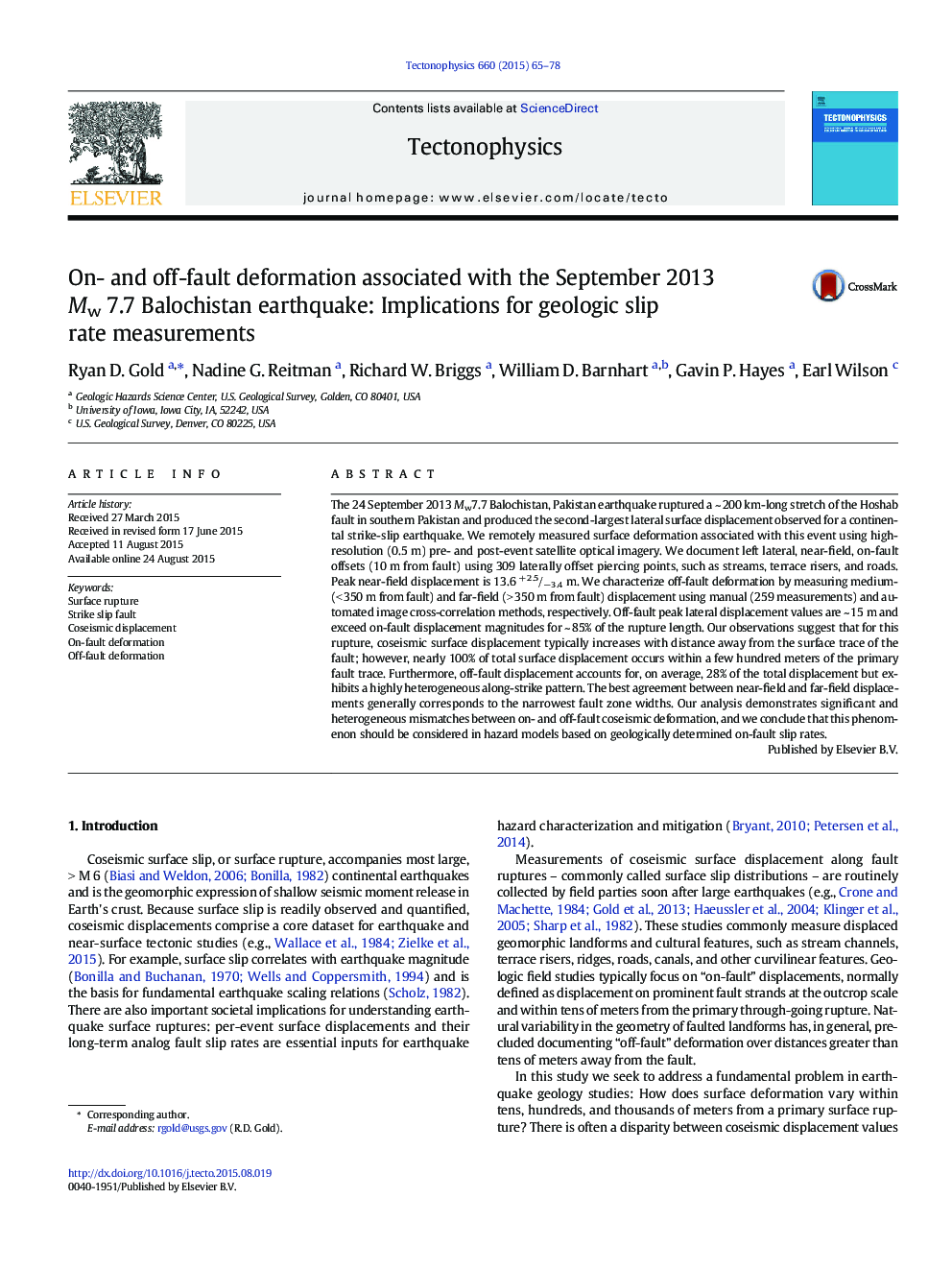| Article ID | Journal | Published Year | Pages | File Type |
|---|---|---|---|---|
| 4691490 | Tectonophysics | 2015 | 14 Pages |
•Maximum on-fault offset ~ 13 m; high local gradients in surface displacement observed.•Twenty-eight percent of deformation was off-fault on average, but along-strike pattern is heterogeneous.•On-fault slip rate measurements can significantly underestimate far-field deformation rates.
The 24 September 2013 Mw7.7 Balochistan, Pakistan earthquake ruptured a ~ 200 km-long stretch of the Hoshab fault in southern Pakistan and produced the second-largest lateral surface displacement observed for a continental strike-slip earthquake. We remotely measured surface deformation associated with this event using high-resolution (0.5 m) pre- and post-event satellite optical imagery. We document left lateral, near-field, on-fault offsets (10 m from fault) using 309 laterally offset piercing points, such as streams, terrace risers, and roads. Peak near-field displacement is 13.6 + 2.5/− 3.4 m. We characterize off-fault deformation by measuring medium- (< 350 m from fault) and far-field (> 350 m from fault) displacement using manual (259 measurements) and automated image cross-correlation methods, respectively. Off-fault peak lateral displacement values are ~ 15 m and exceed on-fault displacement magnitudes for ~ 85% of the rupture length. Our observations suggest that for this rupture, coseismic surface displacement typically increases with distance away from the surface trace of the fault; however, nearly 100% of total surface displacement occurs within a few hundred meters of the primary fault trace. Furthermore, off-fault displacement accounts for, on average, 28% of the total displacement but exhibits a highly heterogeneous along-strike pattern. The best agreement between near-field and far-field displacements generally corresponds to the narrowest fault zone widths. Our analysis demonstrates significant and heterogeneous mismatches between on- and off-fault coseismic deformation, and we conclude that this phenomenon should be considered in hazard models based on geologically determined on-fault slip rates.
